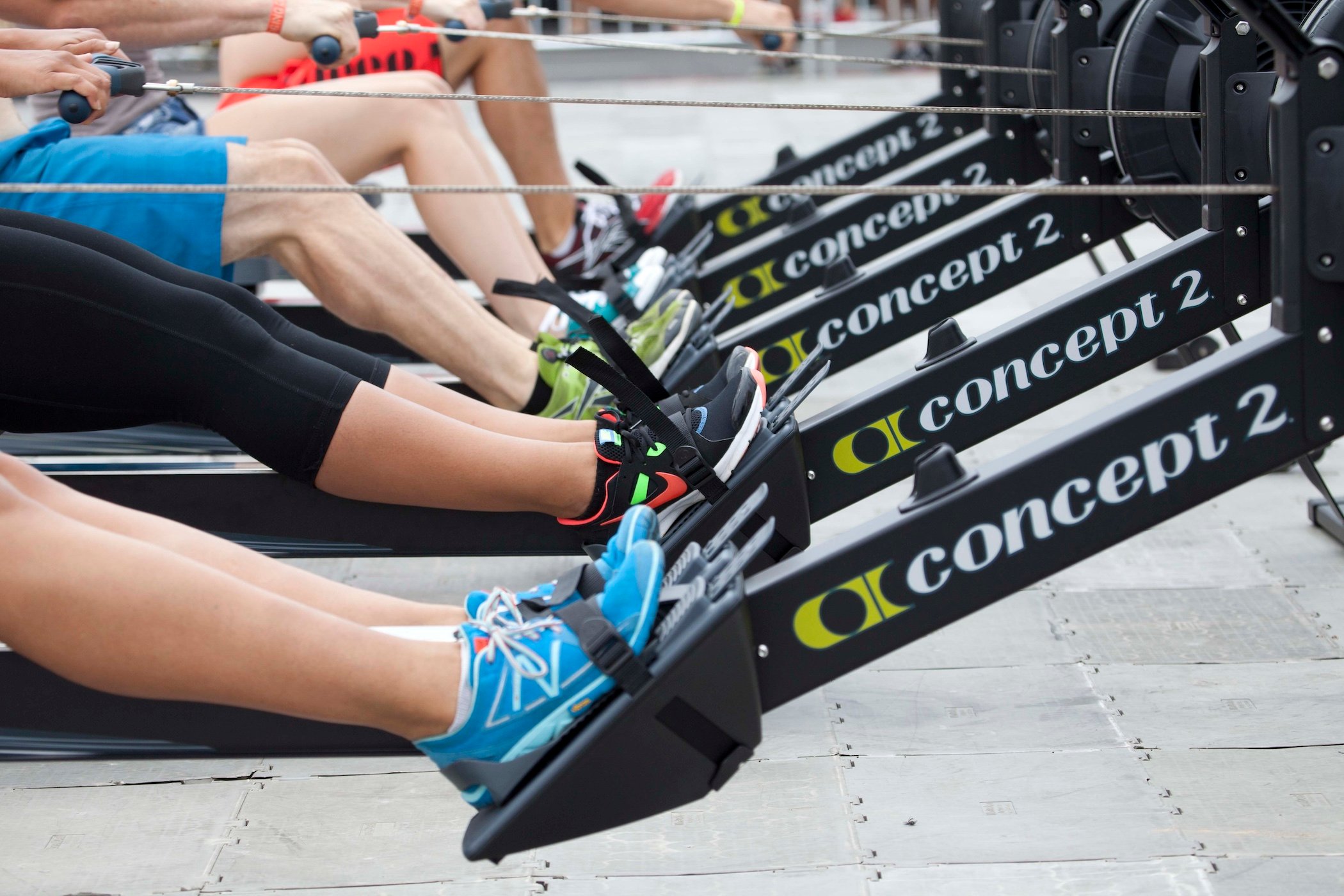Find Your Optimal Foot Position on the RowErg
Jul 12, 2024
Share

Optimal foot position may not appear to be among the most exciting facets of using the Concept2 RowErg, but by considering your foot placement, you may reap benefits in both comfort and performance. So, after you hop on the RowErg, pay a bit of attention to your feet before you start rowing.
Why is foot setting important? It has a lot to do with your position at the catch. The ideal catch position has your shins vertical. If your feet are too high, they can limit your reach at the catch. If they are too low, they may allow over-compression of your legs—letting your seat get too close to your heels and allowing your shins to move beyond the vertical. Low feet may also cause you to come slightly off your seat when you drive your legs. Ideally, your foot position allows a comfortable and powerful leg drive toward the bow of your imaginary boat.
To get the optimal foot position, the Flexfoot on the RowErg should be set to the correct height for you. The Flexfoot fits into the footstretcher, and can be moved up and down to accommodate feet of different sizes. When setting your Flexfoot position, take the following into consideration:
Foot Size and Shin Length
- In general, the larger your feet, the lower the Flexfoot should be. Ideally, the footstrap should cross the ball, or widest part, of your foot. If you’re taller and/or have bigger feet, try moving the Flexfoot lower. If you’re shorter and/or have smaller feet, try a higher Flexfoot position.
- In addition, the longer your shins, the lower the Flexfoot should be set. The goal is to make sure your knees are below the level of your hands as you pull straight through on the stroke.
Shoes
- We recommend using a thin-soled flat shoe for rowing. Rowing barefoot (or in socks) is an option, too.
- A shoe with a thick heel, like many running shoes, will change the angle of your feet on the Flexfoot, and tends to put your foot in a less strong position for the drive. Some may find that this position also bothers their knees. If you wear a thicker-soled, or thicker heeled shoe, you may need to move the FlexFoot one hole lower than described here.
Flexibility
- If you feel that your flexibility is lacking, and you’re having trouble getting to full compression at the catch, you should try moving the Flexfoot down a notch.
- If you tend to over-compress—with shins moving beyond vertical—try moving the Flexfoot up a notch.
Seat Pad
- Remember, adding a seat pad has the effect of making your feet lower. If it’s a thin pad, it shouldn’t be very noticeable, but if it’s a thick one, like .5” or more, you may want to raise your feet by a similar amount.
Personal Comfort
- If you’ve followed the above advice, but just don’t feel comfortable, then you should experiment with the Flexfoot position to see what works best for you.
There is no absolute wrong or right with foot position, but it’s worth considering these points and doing a bit of experimentation to make sure your foot position isn’t hindering either the enjoyment or effectiveness of your rowing
Recent Posts
Tags:
